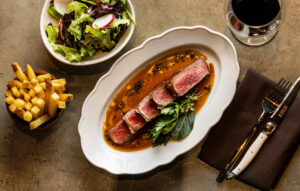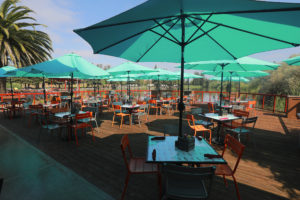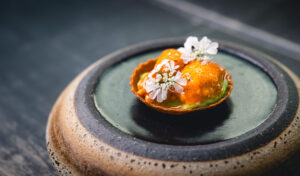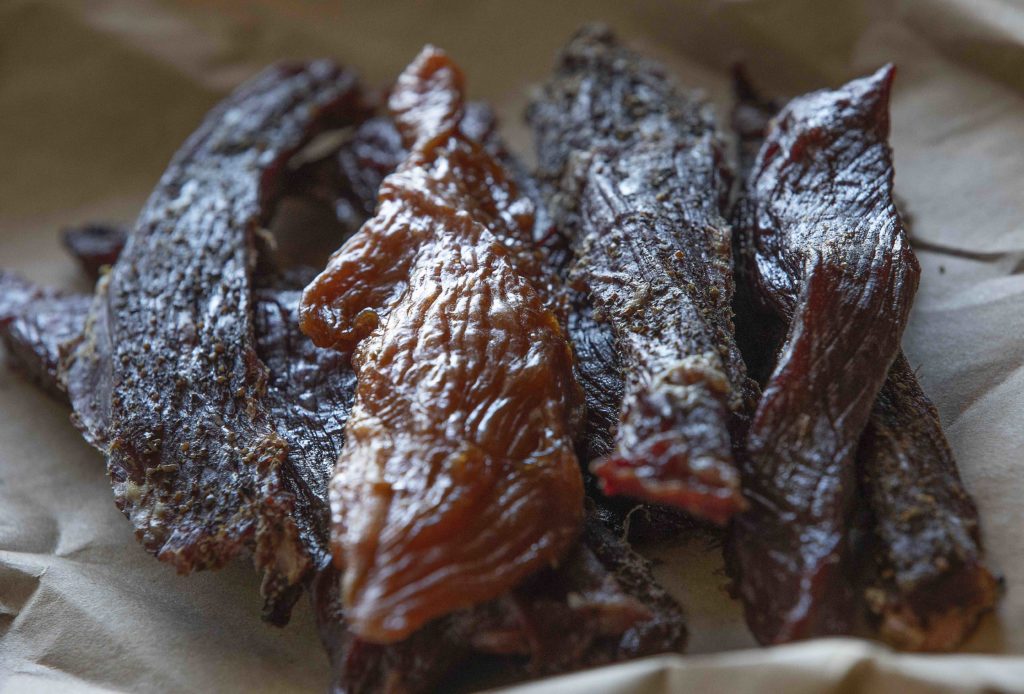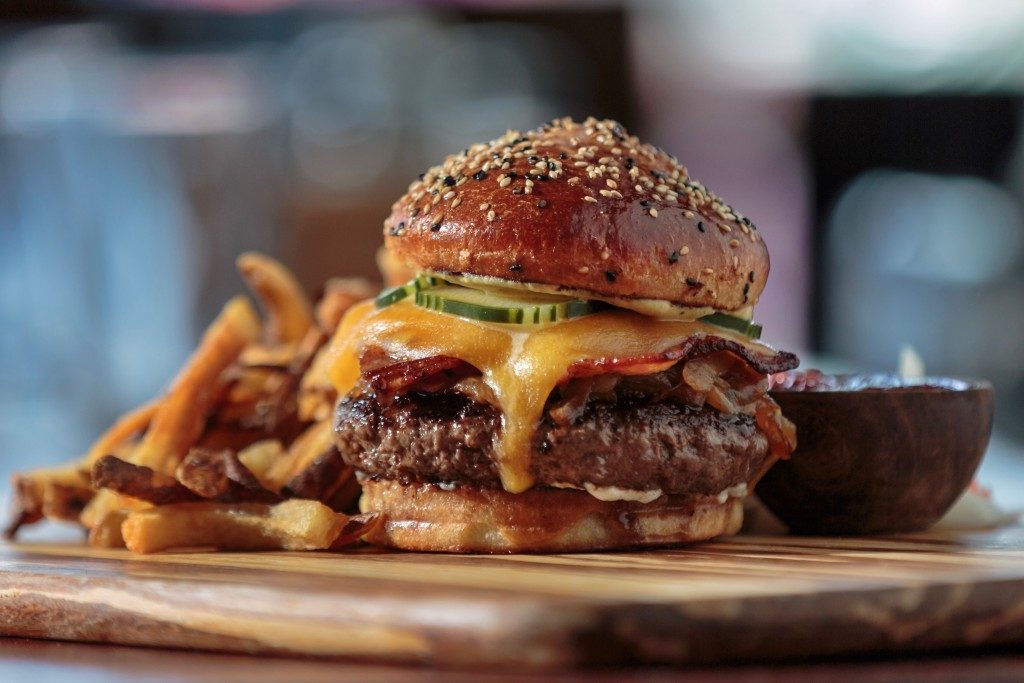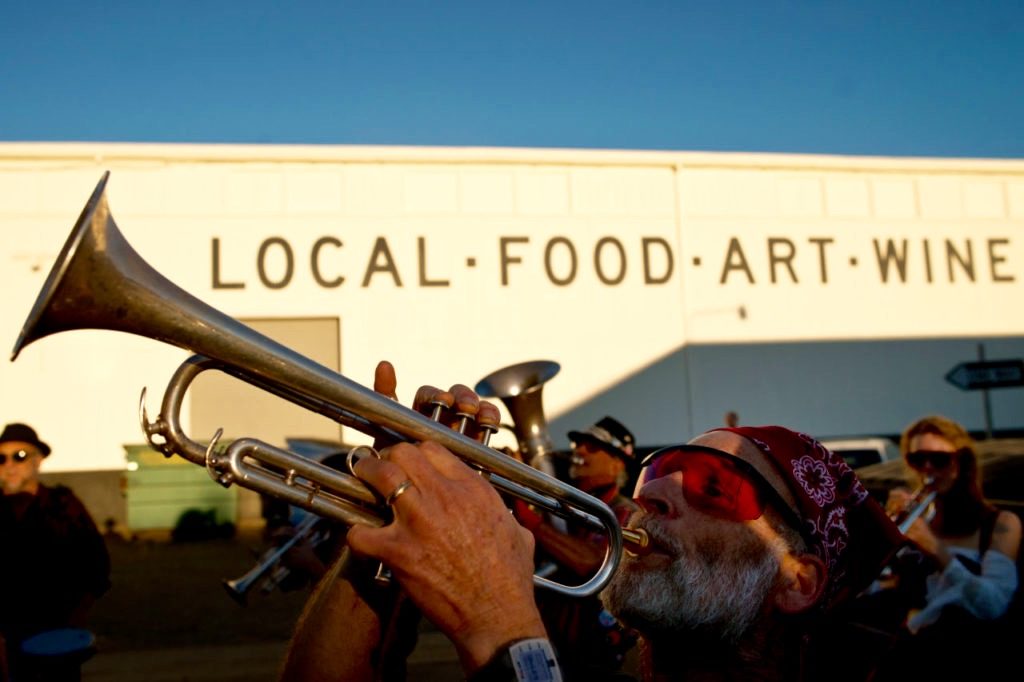Long before Thomas Edison, Louis Pasteur, Prometheus, and the advent of fire, there was jerky. That chewy, dried hunk of meat coveted by cavemen and truckers alike.
From paleo moms to hiker dudes and their ravenous kids, the salty tang of cured meat has come a long way over the centuries.
Today, thanks in part to high-protein diets like keto and paleo, the jerky industry racks up more than $1 billion in annual sales, according to the industry market research group IBISWorld.
From the truck stop to Whole Foods, there are so many choices — teriyaki, salmon, buffalo, grass-fed, even mushroom jerky — it’s hard to know where to begin. But in an age when Jon Sebastiani has sold his Sonoma-based Krave jerky to the Hershey company for a reported $220 million, a pair of local, small-batch jerky purveyors — each with their own methods of flavoring and drying raw meat — seems a good place to start.
“This is the secret,” says Angelo Ibleto, 85, as he walks into the smoky backroom of Angelo’s Meats in Petaluma, where he’s drying a 200-pound batch of jerky.
The former Italian policeman, wearing a tattered Greek fishing cap, smiles like a kid on a scavenger hunt as he points to a large bowl suspended a few feet off the ground. “It’s my special Italian creation, also known as a cement mixer. I just put in a stainless steel pot, and now I can put my meat in there with the spices and enough moisture depending on the quantity of meat.”
It’s where the jerky takes a quick bath, mixing and tumbling for about 10 minutes before spending the next seven hours drying on racks at around 150 to 160 degrees.
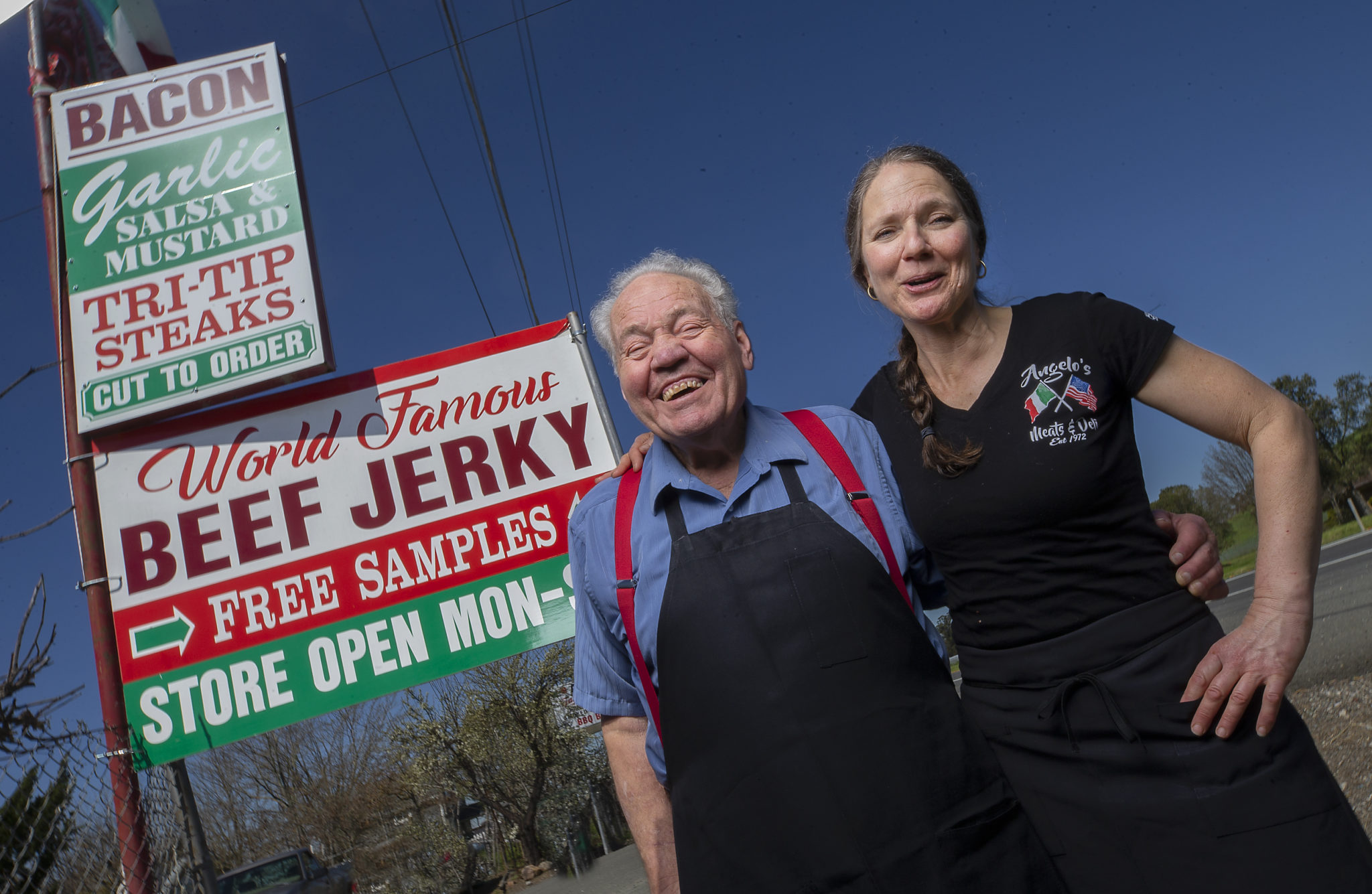
Ibleto has just finished prepping a batch, something he does three times a week, mostly to supply his Sonoma store — Angelo’s Wine Country Deli, which sells as much as 30 to 40 pounds of jerky a day. Originally experimenting with American beef, Ibleto now uses only grass-fed New Zealand flank steak for all his beef jerky.
After 47 years in the meat business and 27 of those making jerky, Ibleto swears by the taste test as the only way to truly appreciate his jerky.
“They say one picture is worth a thousand words,” he said. “But if you put it in your mouth, you know there’s no B.S.”
One of his employees brings over a few pieces of jerky, cut into bite-sized chunks, and we sample the goods.
A little on the dry side, the plain jerky is still the best way to appreciate the unadulterated taste of the grassfed New Zealand flank steak. But the savory Teriyaki Pepper might be the most complex, packed with a moderate spicy pepper bite and the syrupy moisture of teriyaki.
Ibleto makes nine types of beef jerky, including Cajun and VIP (flavored by the Wine Country fireand- ice combo of hot pepper and white wine), and two kinds of turkey jerky.
At some point during the tasting, his daughter Angela Dellinger, who is co-owner and manager of Angelo’s Meats, walks by and chimes in, “I’ll buy jerky anywhere — at Trader Joe’s, at Costco, wherever — and I’ve never seen another jerky that actually looks like ours, like a piece of steak, dried.”
Ibleto just smiles, as if to say, “See? I told you so,” and pops another piece in his mouth, even though he says he usually spits it out like an expert wine taster.
Just up the road in Penngrove, not far from Sonoma State University, Matt Gamba makes 10 kinds of jerky at Bud’s Custom Meats that range from wild pig, venison, and buffalo to spicy mixes of Bloody Mary, Hot Teriyaki, and the best-selling Cowboy Candy Beef.
In his office, wearing a camouflage hat and jacket and armed with a pair of yellow-handled, desk-top scissors, he snips a couple pieces of grass-fed beef jerky, and pops a piece in his mouth.
“We don’t add any moisture to this,” he says, working his way through the chew. “It’s just salt, pepper, and garlic.”

Not surprisingly, it’s super-dry and thin, almost papery, and takes a while to gather moisture in the mouth. When he moves on to sample the bestselling Cowboy Candy, he comments that “what stands out for me is that the flavor stays. It doesn’t drop off. Some jerkys you’ll bite into, and you work it and start getting some flavor, and then it just falls off and then you’re just chewing on meat.”
In contrast, when you taste Gamba’s Bloody Mary jerky, the taste buds light up with Worcestershire sauce, tomato, and spices, almost Cajun in tang, but without the kick.
“This one is very expensive to make,” he says. “It costs a fortune, but it brings people in the door.”
Gamba has seen local appetite for jerky fluctuate over the years, based on word of mouth, fad diets, and Yelp reviews. But at its core, it exerts an ancient appeal that reaches back into our DNA.
“I think it’s probably a primal instinct and what brings us back to that primal urge — where man is from and what man survived on back in the day,” he says.
While jerky only accounts for about 5 to 10 percent of his butcher and meat business, Gamba, 58, has been experimenting with different flavors, starting with teriyaki in the early 1980s. Cowboy Candy is the only USDA-licensed jerky he can sell in other stores outside Bud’s.
“Just the humidity and the length of time you soak or dry can change the whole flavor profile,” he says, strolling back to the smokehouse, where Bacon Candy strips are about to go in after a round of hams are done smoking.
At the moment, 360 pounds of jerky meat are soaking in bins. He typically marinates the grassfed beef jerky for a day and around three days for all other varieties, preferring a stationary bin rather than a tumbler. At Bud’s, they usually smoke around 80 to 100 pounds a week, cooking it at 160 to 170 degrees for around six hours.
For his beef jerky, Gamba uses mostly inside round meat, trimming any excess fat. But he also makes a flank-steak jerky that’s very lean. And then he makes a Bacon Candy that’s real fatty. To savor it, he says, “you’ve gotta love fat.”
So, after more than three decades of making jerky and cultivating a loyal following, does he ever worry about employees stealing his secret recipes? Not at all.
“Have fun,” is his only advice, he says with a laugh.
“It’s a pain in the ass. Good luck. I don’t recommend it,” he adds. “They see what I have to go through here making this stuff, and they don’t want any part of that.”



